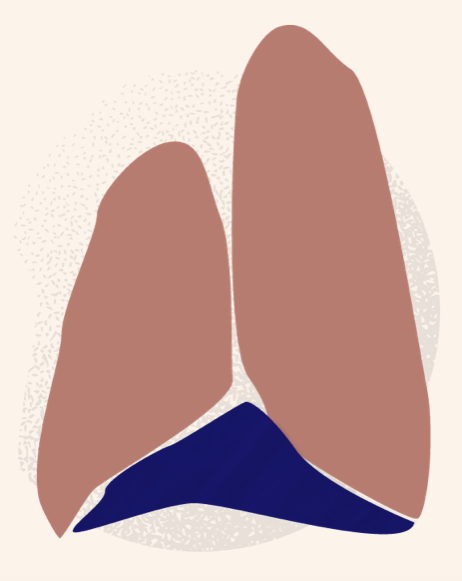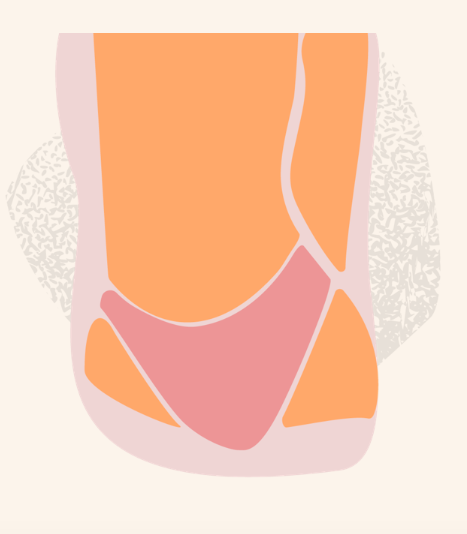Lucy manages the Customer Experience team at Thinx, Inc. and educates consumers on how Thinx, Thinx (BTWN) and Speax can support their bodies from puberty to post-menopause—and about these innovative brand offerings that not only bring comfort and convenience to menstruation and incontinence—but sustainability, too. But before we get into the most modern way to stay dry and experience comfort (please join us on Friday), let’s talk about the pelvic floor!
Wait, what are Speax?
Glad you asked! Speax are absorbent underwear for bladder leak protection—so women can replace bulky pantyliners for good. Speax by Thinx eliminates the need for unsightly, uncomfortable disposable underwear for incontinence. Okay, now back to the pelvic floor…
What is my pelvic floor?
Most people draw a blank here… The bottom line is that your pelvic floor is like a bowl or hammock for your organs. It’s a complex system of muscles (45 muscles connect to your pelvis!) that cradles your insides every single time you breathe.
With that kind of high-pressure job, it’s no surprise that an estimated 24% of women have one or more pelvic floor disorders—or that this percentage increases to 50% as we age. Your pelvic floor includes a group of muscles, ligaments, and nerves at the that serve three main functions:
ORGAN SUPPORT: Making sure the bottom doesn’t fall out (but if you have pelvic organ prolapse, you have options!)
SEXUAL APPRECIATION: Self-explanatory, super important.
WASTE ELIMINATION: Controlling the closure and opening of your bowel and bladder (somebody’s gotta do it).

The uterus, ovaries, fallopian tubes, cervix, vagina, rectum, bladder, and urethra all cohabitate between your abdomen and legs, and look to your pelvic floor muscles for support. Think about it: this means your pelvis and all the parts it protects play a role in everything from fertility and childbirth, to being able to pee when your brain sends you the signal that it’s time to go.

What makes a pelvic floor dysfunctional?
“Pelvic floor dysfunction” is a catch-all for a range of conditions, but it’s medically defined as the inability to correctly tighten and relax the pelvic floor muscles for waste elimination. Usually, it is paired with 1 or more of the following:
–Bladder leaks (a cough, jump or sneeze makes you pee a little)
–Incontinence (numbers one and two)
–Painful penetrative sex
–Bleeding between periods
–Lower back and/or hip pain
–Constipation
–Prolapse
–Frequent and/or urgent need to pee
Navigating pelvic floor dysfunction can feel scary, isolating, and overwhelming. But it also means you get the opportunity to learn your body’s ins and outs better than most people will ever learn their own. No matter the cause of your leaks, there are treatments and solutions out there for you, and the first step is understanding the underlying cause.
CAUSE OF BLADDER LEAKS:
Bladder leaks are more common than you may realize… 1 in 3 women leaks, so none of us should feel shame talking about it—whether it starts with a close friend, a long look in the mirror, or a chat with a health professional. There isn’t a one-size-fits-all answer to why leaks happen, but there are a ton of factors that increase your odds, including specific life experiences.
PERIMENOPAUSE & MENOPAUSE:
Your body naturally enters perimenopause when it starts producing less estrogen and progesterone—usually in your 40s. Perimenopause symptoms like hot flashes, lower sex drive, and vaginal dryness are actually what gives menopause such a bad rap, but bladder leaks are another super common symptom that occurs when your hormones start to shift.


Even if you skate through perimenopause without experiencing leaks, when you officially enter menopause, prolonged lower estrogen levels lead to weaker pelvic floor muscles, which explains why you might be caught off-guard by leaks when you laugh, jump, cough, sneeze, or even just stand up a little too fast.
Bladder leaks can also spring from having a surgery that affects your pelvic floor muscles (i.e. hysterectomy), or as an offshoot of an underlying health condition. That’s why it’s important to talk with a trusted health professional to figure out the best next steps for you and your body. In one way or another, the answer to why you’re leaking is tied up in the state of your pelvic floor, so it’s always a good idea to check up on it. If you have no idea how to do that, we’ve got you covered.
Caring for your pelvic floor
Every body has its own little ecosystem, which means that protecting your health—and rehabilitating issues like pelvic floor dysfunction—requires a multifaceted approach. The more open you are to trying different healing techniques, including everything from pelvic floor muscle therapy to psychotherapy, the sooner you’ll find the treatment(s) that work best for you.
Content provided by Thinx, Inc. Medically reviewed by Dr. Jennifer Conti, MD. To read this article in full at sheathinx.com, click here.




